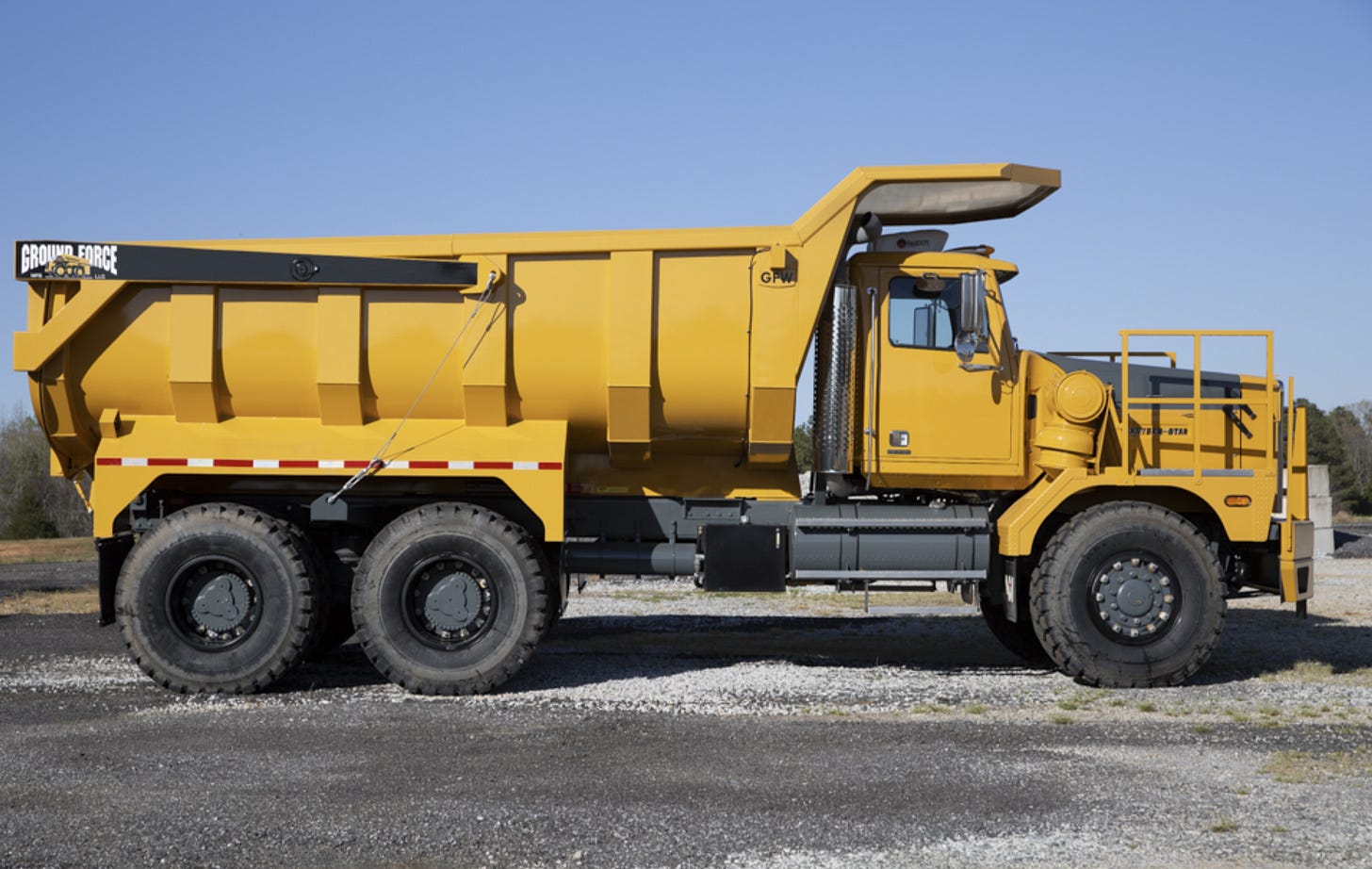Tech in mining #15
Hello everyone!
Hope you're all staying safe this week, amidst the recent upswing of COVID cases. We've got a few interesting climate-related mining updates, as well as some totally "out there" space news! Let's jump in.
🗞Interesting updates
The Canadian and Québecois government recently announced a $3.6 million contribution towards Propulsion Québec to support the development of an electric propulsion system for 40-ton mining trucks. Per truck, Propulsion Québec estimates that the electric system has the potential to eliminate over 80,000 liters of diesel annually. Ultimately, the development of a viable electric vehicle for mucking in large open-pit mines will be a large stepping stone to net-zero emissions for the mining industry by 2050, so it's good to see these investments ramping up across the industry.
The UK Government also recently announced more work towards mitigating the environmental impacts of mining by creating The Interdisciplinary Circular Economy Centre in Technology Metals. Led by the Camborne School of Mines, the Centre was created as part of a £22 million investment to reimagine the entire mineral extraction process from exploration to reclamation. The goal of the Centre is to encourage mines to incorporate principles of the circular economy, where waste is eliminated and resources are reused. Initial research is going to develop a case study around many of the exploration projects in the Cornwall region. Given the consumption of energy and water resources in the mining, as well as the severe effects of water pollution, we're hopeful that circular economy approaches will lead to a more sustainable future for the industry.
Skipping back over the pond, Caterpillar revealed a new initiative at the South Dakota Mines university geared towards developing next-gen mining technologies. Specifically, the "Cat Labs MineStar Consortium" will be focusing on advances in autonomous mining equipment, as well as better software solutions for managing mining and construction operations. As we've been learning more about the industry and getting exposed to some of the existing software solutions out there, we're glad to hear that OEMs in the industry are looking at improving offerings in the market!
Now, for a couple more "out there" updates from...space! Astronauts on the International Space Station have recently shown that bacteria can be used to extract materials from rocks on the Moon and Mars. UK researchers have been developing small, matchbox-sized devices called "biomining reactors" that provide an environment for bacteria to break down basalt rocks into soil. Of course, this soil could be used for growing crops in space, which would be essential to the long term survival of a space colony on the Moon or Mars. This is absolutely mind-blowing stuff and a frontier of mining that's completely foreign to how most of us terrestrials think of the industry!


Sticking with our space theme, researchers have demonstrated how data collected from satellites can be used to better monitor soil stability in open-pit mines. They used Synthetic Aperture Radar Interferometry (InSAR) to detect deformations in the ground that could contribute to slopes collapsing in an open pit setting. This is a common technique to detect these features but had previously only been used onboard satellites that had month-long intervals between recordings of a given region. Now, Chinese researchers have adapted the technique to work on satellites, such as the EU's Sentinel 1 satellite, that have a much lower orbital interval, as low as six days for some European regions. This could lead to a more complete picture of geological stability at open-pit mines, ideally making these operations safer and more reliable in the future!
That’s it!
Please share this with a friend who may be interested in subscribing!



